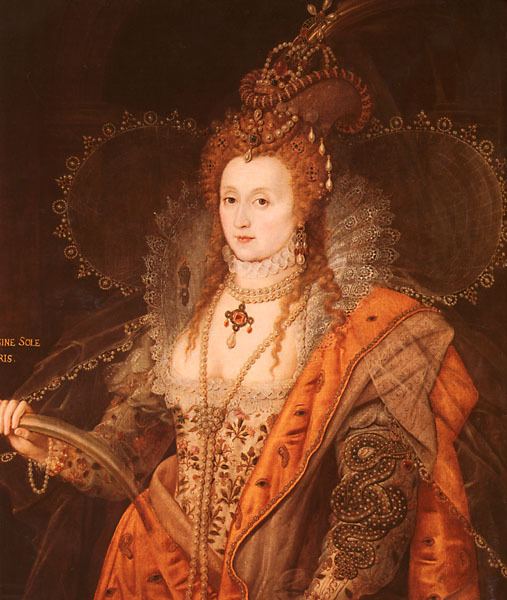Humanities: Queen Elizabeth I
Who is Queen Elizabeth I?
 |
| Rainbow Portrait Unknown 1600 Hatfield House |
The JSTOR article that I chose based on Queen Elizabeth I is written by Rene Graziani called " The 'Rainbow Portrait' of Queen Elizabeth I and Its Religious Symbolism ". In the article, it introduces Queen Elizabeth I in the portrait and emphasizes the symbolic images within the portrait. The Rainbow Portrait (1600) is kept in the Hatfield House and there is no given artist of the portrait. With that being said, the portrait was mention that there are symbolic features to it. One of the most important symbolism that the article pointed out is the rainbow that Queen Elizabeth I is holding on her right hand. Dr. Frances Yates stated that the rainbow that she's holding is a symbolism of a "peace bringer" ( Graziani 248 ). Many further believe that the rainbow is a representation that Queen Elizabeth I has restored England. In connection with restoration, the portrait has a religious upbringing of how God has shown Noah his rainbow after the flood. In a way, the portrait is portraying Queen Elizabeth I as a "God" to England.
What really stood out to me for Queen Elizabeth I was how she is known as the "Virgin Queen". After hearing that is her other title, it made me question why and what was the reason? As I continued to research her, I understood why she was called " Virgin Queen". Not only that but I remember learning a bit about her from AP World History on the East India Company. Within the portrait and Queen Elizabeth I, I found it very interesting how the rainbow played a huge role in portraying her representation as Queen who has restored England. Yet, I felt it contradicted the idea that she has left England in war debt. In connection to my theme on "how humanism influences human events", the portrait brings this idea of a rainbow that depicts great imaging of Queen Elizabeth I. Not quite sure if I have ever seen a portrait with such great symbolism on a King or Queen. I feel that the artist affirms the theme perfectly with the rainbow because this sets a whole new image for future portraits for leaders. It's an idea that can further contribute to portraits and emphasize the great representation of leaders; the beginning of propaganda.
“Analysing Portraits.” The Historical Association, https://www.history.org.uk/student/resource/3212/analysing-portraits.
Berry, Ciara. “Elizabeth I (R.1558-1603).” The Royal Family, Royal Household, 3 Aug. 2018, https://www.royal.uk/elizabeth-i.
British History. " The Rainbow Portrait of Elizabeth I: Symbolism In Portraiture." Youtube. 24 Mar. 2019, https://www.youtube.com/watch?v=UUE9JiDlg50
Comments
Post a Comment